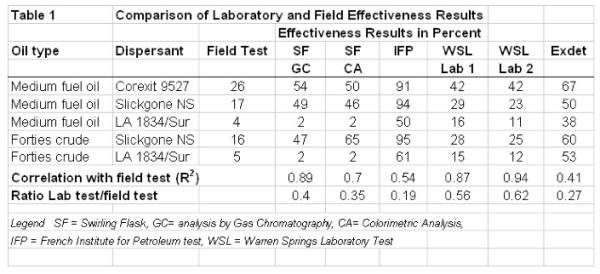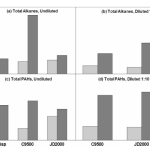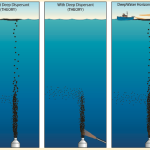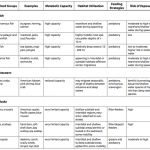![]() When I don’t know enough about a subject, I tend to Google and data-mine—obsessively. So it has become with dispersants. In the wake of oil spill, this word has been thrown around, but often without any corresponding depth of information. Kind of like that cousin you always see at family parties but never manage to catch up with (he’s in med school now, right?)
When I don’t know enough about a subject, I tend to Google and data-mine—obsessively. So it has become with dispersants. In the wake of oil spill, this word has been thrown around, but often without any corresponding depth of information. Kind of like that cousin you always see at family parties but never manage to catch up with (he’s in med school now, right?)
To satisfy your curiosity, dear reader, I will be blogging a multi-part series reviewing the current state of knowledge about oil spill dispersants. A lot of information has come from comprehensive literature reviews compiled by the Prince William Sound Regional Citizen’s Advisory Council (PWSRCAC), but references to specific studies will be included when appropriate.
Part I: How effective are dispersants on real oil spills?
To start off, lets summarize the three main motivations for using dispersants in the first place: 1) reduce the impact of oil on shorelines, 2) reduce the impact on birds and mammals in surface waters, and 3) promote the biodegradation of oil.
Dispersants must be applied successfully and have a high effectiveness once in ocean waters. This sounds easy, in principle—once you’ve perfected your Corexit formula in the lab, just spray it from a helicopter, and voila! Except there are a lot of factors which you also have to take into account: the composition of the oil spilled, sea energy, whether the oil has been subjected to weathering at all, exact type of dispersant used and the amount which you sprayed, and ocean temperature/salinity. Thank goodness for all those lab tests over the years which figured all this stuff out, you say. Um, well actually it seems like even designing simulation experiments is difficult, and different tests can report different effectiveness scores for the same dispersant. It is difficult to accurately scale up lab tests in order to predict dispersant action on real spills. Older studies used methods and analyses which have since been discredited. Wave-tank tests can probably provide upper limits on dispersant effectiveness, but there are SEVENTEEN (!!) critical factors that require strict control for accurate results (Fingas 2002). Field tests in open ecosystems are even worse for measuring the fate of oil and controlling variables. In terms of measuring dispersant effectiveness, tank tests, field tests, and lab tests all disagree. Awesome.

Results from recent (more accurate) field tests report that dispersants can distribute 10-40% of the surface oil down through the water column, but the overall average for all existing studies is 19%. That’s not very effective. And the error bars are probably as high as the Chrysler building.
The other factor is that dispersants don’t actually disperse all components of oil spills, and are particularly ineffective against resins, asphaltenes, and large aromatics and waxes. Dispersants work great on light oils such as diesel, but natural hydrodynamic forces do the job equally well without any chemical additives. So, the answer to our initial question—how effective are dispersants—is still a big fat question mark, even after decades of research.
References:
Fingas, M.F. (2008). A Review of Literature Related to Oil Spill Dispersants 1997-2008 Prince William Sound Regional Citizens’ Advisory Council (PWSRCAC) Report
Fingas, M.F. (2002). A Review of Literature Related to Oil Spill Dispersants Especially Relevant to Alaska Prince William Sound Regional Citizens’ Advisory Council (PWSRCAC) Report
Dispersants! Part II: Toxicity
Dispersants! Part III: Do dispersants really promote the degradation of oil?






You might be planning on doing another post on this, but how harmful are the dispersants to the environment? Depending on how harmful they are, it sounds like their use may or may not be worth the slight increase in dispersion.
Thanks for starting this series about dispersants – I look forward to reading the next post
thanks for taking the time on these, good information.